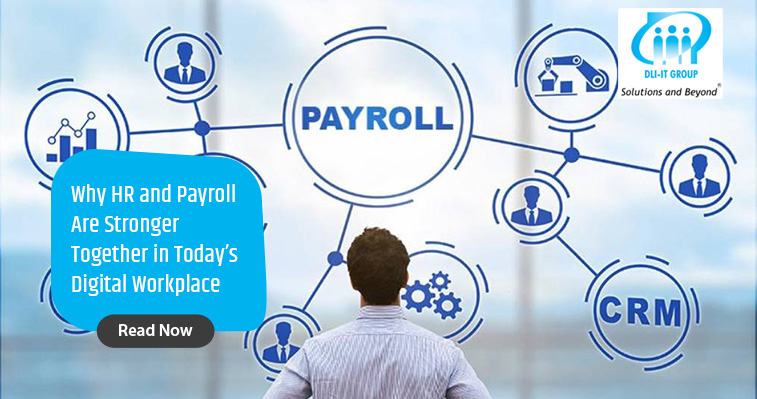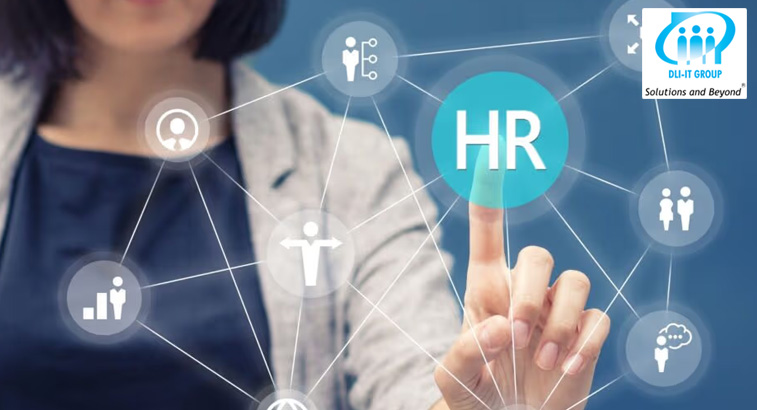Payroll and human resources (HR) are two fundamental operations of any company. Payroll compensates employees correctly at the correct time, and HR handles employee information, benefits, and compliance. The harmony between these two departments is critical, particularly when companies utilize HR and payroll software Dubai to optimize their workforce functions.
With contemporary HRMS, companies can merge payroll and HR operations without difficulty, saving them from mistakes and boosting effectiveness. But in what way do payroll and HR collaborate? This article describes how they are interrelated, their issues, and how technology complements their cooperation.
The Core Function of HR and Payroll
HR and payroll are different functions but cross paths numerous times. A perception of their core functions makes their reliance obvious.
HR Responsibilities
HR, however, looks after handling employees throughout their life cycle within the company. They include:
- Employing new workers and initiating them
- Maintaining employee records
- Performance reviews and appraisals
- Providing benefits and compensation
- Handling training and professional development
Payroll Responsibilities
Payroll, however, sees that employees are paid correctly and timely. Its most important functions include:
- Processing salaries and wages
- Handling tax deductions and benefits
- Handling bonuses and incentives
- Preparation of payroll reports
- Compliance with taxation legislation
Both of these departments depend on correct employee information, and therefore, their coordination is crucial to seamless, error-free operation.
The Real Role of HR and Payroll Software in Dubai
HR and payroll software are being utilized by multiple companies in Dubai in an attempt to manage their employees effectively. All such software combines both the HR and payroll functionalities together, putting an end to the practices of manual mistakes and giving accuracy.
Major Features of HRMS in Payroll and HR Integration:
- Automated Salary Payment – Enables timely and accurate salary payment based on HR inputs.
- Compliance Management – Tracks local labour laws and tax rules.
- Leave and Attendance Integration – Connects employee attendance data with payroll calculation.
- Employee Self-Service – Enables employees to view payslips and modify personal information.
With an advanced HRMS, organizations can automate HR and payroll activities, avoid redundancy, and gain efficiency.
Find Out How HR and Payroll Coordinate
Payroll and HR functions need to work together in order to drive efficient workforce management. Coordination between them is better for both effectiveness and regulatory compliance.
- Employee Onboarding – Employees’ data is taken by HR and used by payroll to configure pay systems.
- Salary Changes – Promotions, bonuses, and salary adjustments involve communication between payroll and HR.
- Leave and Attendance Management – Payroll calculates deductions from attendance records provided by HR.
- Benefits Administration – Benefits are decided by HR, while payroll makes sure that deductions and payments are accurate.
- Compliance and Reporting – Both departments guarantee tax filings, audits, and compliance with laws.
These activities are more efficient with the correct HRMS, reducing errors and delays.
HR-Payroll Challenges
While interdependent, payroll and HR departments have issues that can impact business operations.
- Discrepancies in Data
Employee data is dependent on HR and payroll personnel, but discrepancies create payroll errors. Employee misclassifications, for instance, cause miscomputation of pay and benefits.
- Compliance Matters
Businesses are required to comply with labour law, tax code, and worker protections. Segregation between payroll and HR generates fines and lawsuits.
- Manual Processing and Errors
In the absence of using HR and payroll software in Dubai, manual input maximizes the potential for errors like miscalculated salaries and slow payments.
- Security Issues
Personal information of the workers, including salary and tax information, must be handled securely. In the event of not fully integrating HR and payroll systems, data breaches happen.
By implementing an HRMS, firms will be able to eliminate such disadvantages, resulting in a smooth performance.
Why Businesses Should Prioritize Payroll and HR Alignment
A sound HR and payroll system is more than just paying salaries; it is one that is vital to business success. Inconsistency between HR and payroll may result in payroll errors, employee discontent, and legal complications.
Conversely, companies that invest in HR and payroll software in Dubai gain greater fiscal control, compliance, and efficiency. An HRMS-integrated system offers transparency in the workforce whereby every payroll element, ranging from tax withholdings to overtime payments, is determined accurately.
By prioritizing synchronization, businesses provide a seamless working culture, yielding growth, stability, and enduring success. Using improved reporting and analytics capabilities of an HRMS, businesses also monitor trends, recognize cost-savings opportunities, and make calculated decisions on hiring workforce expansion, salary revisions, and benefits releases.
Selecting the Appropriate HR and Payroll Software in Dubai
Choosing the best HR and payroll software Dubai is based on the requirements of a business. Companies need to seek solutions that provide the following:
✔ Seamless Integration – The software must integrate HR and payroll functions smoothly.
✔ Customization Flexibility – Companies require flexible solutions to suit their needs.
✔ Cloud-Based Accessibility – Cloud HRMS provides remote access to payroll and HR information.
✔ Regulation Compliance – It must be compliant with Dubai labour and tax policy laws.
✔ Scalability – The software is capable of handling business growth and staff expansion.
A robust HRMS allows businesses to automate their payroll and HR processes to run effectively.
The Impact of HR and Payroll Collaboration on Employee Satisfaction
A seamless process from payroll to HR can impact employee satisfaction tremendously. Employees would like to get paid on time and in the correct amount, with straightforward details of additional allowances, incentives, and deductions. Payroll delays or mistakes can lead to annoyance, negative attitudes, and even lawsuits.
When HR and payroll operations are harmonized together—particularly with an integrated HRMS—employees have fewer problems with salary computation, tax withholding, and benefits payments. This not only increases organizational trust but also employee retention and overall participation.
In Conclusion
HR and payroll procedures heavily rely on one another. HR handles the details of employees, whereas payroll makes it possible for proper remunerations. When organizations implement HR and payroll software in Dubai, it is possible for them to automate these procedures, minimize errors, and enhance workers’ management.
An integrated HRMS improves operational efficiency and enables organizations to drive productivity and growth. Organizations that are investing in appropriate technology will be in control of finances, compliance, and staff engagement, and payroll and HR must go hand in hand and be a smooth process.

